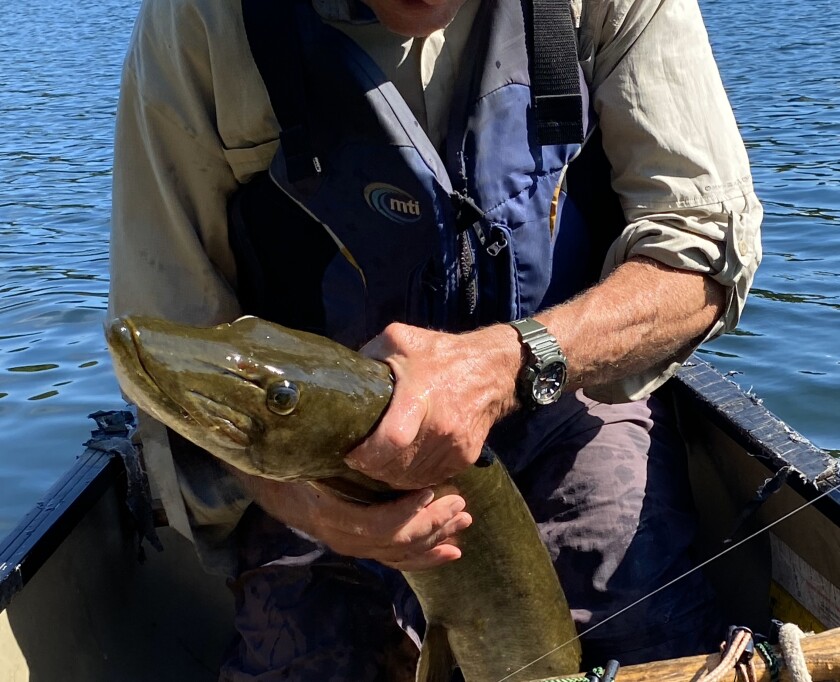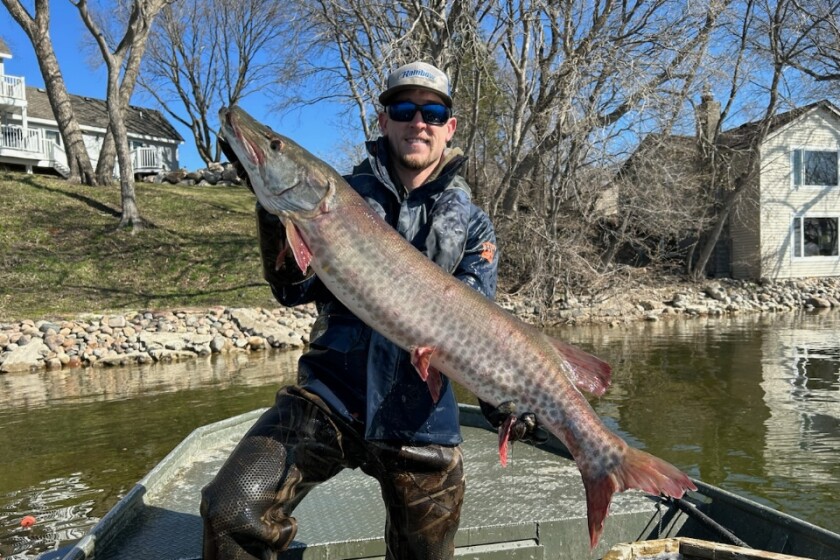SPICER — For most anglers, lakes in the Kandiyohi County area offer it all, with one exception — muskies, as in Muskellunge.
While the local waters are popular with anglers seeking Minnesota’s popular inland lake game species — whether sunfish, walleye, bass or northern — there are no waters (officially) holding a population of the state’s most celebrated (and elusive) trophy fish.
ADVERTISEMENT
Is it time to add muskies to the list of game fishing opportunities for this area?
Dave Coahran, fisheries supervisor with the Minnesota Department of Natural Resources in Spicer, has recently tossed the idea out there. He sees it as an opportunity to expand the recreational opportunities for anglers in the area served by the Spicer fisheries office, which includes 40 fishing lakes and 200 miles of rivers and streams in Swift, Chippewa, Kandiyohi, Yellow Medicine, northern Lyon and eastern Lac Qui Parle counties.
He emphasized that he has not vetted the idea within the DNR’s fisheries division, and there is a process to be followed before the idea can be considered and either approved or rejected.
He believes Norway Lake would likely be the most suitable for hosting a muskie fishery, for two big reasons. It has a low abundance of northern pike, and muskies do best in lakes with limited competition from northern pike.
Norway Lake also holds an abundant population of freshwater drum or sheepshead, which would provide a good forage for muskies. It would also help to have a top apex predator helping keep their numbers in check, he added.
Coahran believes the Spicer area would be well suited to holding a muskie fishery. The state hatchery in New London raises muskie for stocking. There are 102 lakes in the state managed as muskie lakes.
The hatchery is also able to hold the muskies it raises for two years. By raising them two years to a size of 16 to 18 inches, the stocked muskies have a much higher survival rate, he explained.
ADVERTISEMENT

Coahran said he has not received much in the way of feedback since he raised the idea of having a muskie fishery in the region during the Conservation Conversation portion of KWLM Radio's Open Mic program on Oct. 2.
Offering muskie fishing in a lake outside the species normal range is not unusual. The Windom area fisheries office began stocking muskies in 1999 in Fox Lake in Martin County, which is located north of the Iowa border. It proved a successful venture for a number of years. At one point, a creel survey of anglers on the lake found that 25% of them were targeting muskies, according to Ryan Doorenbos, fisheries supervisor for the DNR in Windom .
He said water quality issues in the lake have impacted the Fox Lake muskies in recent years, and stocking has ended. As sight feeders, the muskies fared poorly in the algae-thick waters, he explained.
Doorenbos said his fisheries office is now stocking muskies in the Fairmont chain of lakes. The new fish are not yet the trophy size favored by anglers, but interest for catching them is building, he said.
“We have people who keep on asking about it, how they’re doing. It’s on their radar,” he said.
He said that when the idea of stocking muskies in the area was initially raised, there was some resistance. “It was surprising,” he said of some of the comments he heard. Everything from fears that muskies would bite swimmers to concerns about muskies preying on walleye or competing for food with them were raised.

Muskies are found in many Minnesota lakes that are popular for swimming and similar activities, with no problems reported.
ADVERTISEMENT
And, recent research by Michael Knapp, Steven Mero and David Staple with the Minnesota DNR and published in the North American Journal of Fisheries Management has made it clear that stocking muskie “had not had consistent negative effects on game fish populations.”
Now that local anglers have seen the reality of muskie stocking, Doorenbos said most of the anglers in the Windom area are no longer worried. “It has become a big nothing burger,” Doorenbos said of the fears about muskies.
Anglers seek muskies as a trophy fish. There is a strong catch and release ethic among those who pursue them. State regulations only allow the taking of one trophy muskie of 54 inches or larger in most waters.
For Coahran, muskie are a “memory-making fish.” Most anglers will always remember the experience of catching one of these big fighters, he explained.
But even if muskie fishing is to become an opportunity for anglers in this area, it will not be for a number of years. Coahran said the process to get approval will definitely take some time.
And, if it is approved, it will also take a few years before any stocked muskies reach the size that attract anglers, he added.
In the meantime, those serious about catching muskies do have some opportunity in Kandiyohi County. There are known to be a few muskies lurking in the depths of Nest Lake and Green Lake. They are fish that escaped from the upstream muskie rearing ponds at the New London hatchery.
ADVERTISEMENT












